A voltage drop in a household network is a common phenomenon. The reason may be the actions of the energy company, breakdowns, overloads, other force majeure circumstances. For many technical devices in a room and apartment, even minor jumps are fatal. To minimize the consequences, you need to know how to secure your home and what to do after: where to go with a complaint, for compensation, and more.
Definition of the term
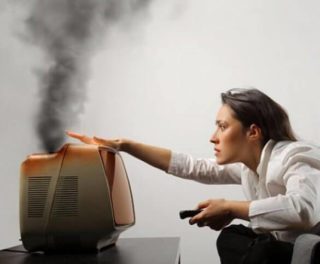
A power surge is a short-term significant power surge that exceeds the safety standards. In Russia, jumps within +/- 10% of the face value for 7 days are considered acceptable. For example, for a standard 220V outlet during a week, normal values are from 198 to 242. There are three types:
- longer than a minute - long-term deviation from the norm;
- less than a minute - short-term fluctuations;
- surge voltage (electricians call "surges").
Equipment and wiring can “burn out” regardless of the reasons and type of energy surge. After the "surges", the quality of the resulting voltage deteriorates significantly. If the voltage in the house is constantly jumping, you need to look for the reason, install protection, stabilizers, limiters.
The main causes of power surges
Various events can lead to a sharp change in the voltage level - from technical issues to weather conditions. In many cases, it makes no sense to look for the "culprit", but some are directly dependent on the work of the company that provides the building with electricity.
Thunderstorms

In the old days, during rain and thunderstorms, all equipment was disconnected from the power supply, sockets were removed from the network. Household equipment did not have protection sensors, so the actions were expedient. Today, most devices have safety modules that protect against power surges and sudden surges.
However, electricians recommend turning off the computer. When thunderstorm clouds appear, lightning strikes reach billions of volts. Modern protection systems reduce the risk of a direct blow to electrical wiring, but do not completely eliminate it. Cables in dormitory areas suffer more often. Such lines are laid as you like, sometimes in violation of the rules. Routers, switches, a computer with a hard drive and a monitor, and other network equipment can break down.
Atmospheric overvoltage
A situation similar to a thunderstorm - a difference in voltage accumulates in the atmosphere, a lightning strike occurs. If a shock hits directly into an electrical installation or in the immediate vicinity of it, a sharp voltage surge will occur in the networks. Low-power installations burn out first of all.
Distinguish between inductive (next to the block) and direct throw. In the second case, in addition to the voltage surge, mechanical breakdowns occur - the racks, supports of overhead lines are split. For household appliances and appliances, there is a danger in every case.
Technogenic reasons
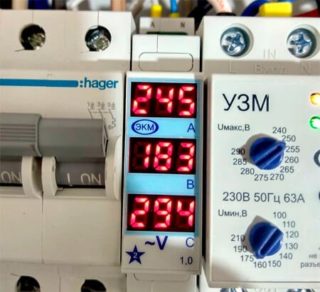
The most common causes of sudden changes are technical problems and the human factor.At home and in production, they do not always monitor the maximum load of the network and connect a lot of devices at the same time, which causes a surge in electricity. Devices without protection will burn out. Other similar situations include:
- Overloading at a transformer substation - most of the projects were formed more than 30 years ago and were not designed for the current amount of electricity consumed.
- Accidents on power lines and cable networks - occur due to the general condition of wires, equipment and poor weather conditions.
- Malfunction or poor contact with the neutral wire.
- Problems on the in-house part of the electrical wiring (irregularities during installation, low-quality or faulty equipment).
- Being near large industrial and other facilities (shopping centers, workshops and the like) with a large consumption of electricity - when the equipment is turned on and off, there is a sharp voltage drop on neighboring networks, including.
There are a lot of reasons for power surges. If the house or premises are in a risk zone, you should take care of additional protection of electrical equipment in advance.
Possible consequences
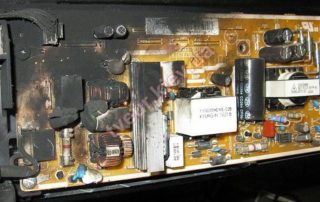
A voltage surge means a short-term sharp change in the level of electricity in the network. For household networks of 220 Volts, the permissible limits are from 198 to 242 Volts (within 10% of the nominal value). First of all, electrical appliances with minimal or no protection "suffer" from drops.
The most dangerous are the drops from thunderstorms and lightning striking electrical installations. The difference in such cases can be up to several kilovolts. With a heavy load, relays and other devices do not have time to work.
A break in zero (contact) causes the combustion of household devices in most cases. The voltage level reaches 380 volts (more often - 300-320). This amount is enough to disable equipment.
Protection methods
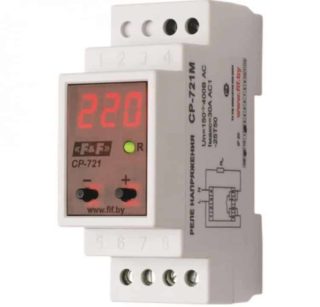
It is impossible to completely exclude the possibility of drops. If power surges are constant, there are several options to secure your expensive home appliances. It can be used for most of the known types of devices.
Voltage monitoring relay
The device helps to solve the problem of sudden power surges in the network. In case of deviation from the set values, the device turns off the equipment. After the voltage supply returns to the set rate, the relay starts supplying electricity again.
This method helps out only in some situations - a break in the zero contact, hitting the power lines of a city transport cable (tram, trolleybus). In lightning strikes and during periods of atmospheric overvoltage, the device is almost useless.
You can install it yourself by following the step-by-step instructions.
Uninterruptible Power Supplies
These devices do not belong to protective ones, however, together with them, they help to avoid burnout of devices, but do not remain in complete isolation until the normal voltage level is restored. Providing electricity to an entire house or apartment is impractical and economically ineffective. It is enough to connect a separate section of wires (for example, for lighting).
The choice of uninterruptible power supplies is influenced by the total number of devices in the room and the required amount of energy. Devices are classified according to the maximum amount (value) of current.
Surge Protectors
If voltage jumps in the apartment (throws, surges, etc.), it is recommended to use special stabilizers. The maximum effect is given when the voltage "sags" at the input. They help with weak surges in the network, but they cannot cope with strong impulses (for example, a lightning strike). Electricians recommend using in tandem with relays.
Lightning surge protection
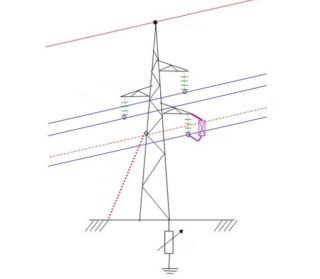
Overvoltage and lightning are the cause of burnout of household appliances. You can avoid unpleasant consequences if you install special voltage supply limiters at the input. It is especially important to use the devices in private homes. Without protection against thunderstorms during bad weather conditions, it is necessary to disconnect all home devices from the network (pull out from the socket), turn off the light.
These devices only protect against high voltage surges. They are useless during minor power outages.
Where to complain and how to compensate for damage
Initially, a complaint and a claim for compensation for damages are filed with the company with which the contract is concluded. At the same time, it is necessary to describe in detail what happened and why this particular firm is considered to be guilty. Issues on collective appeals are resolved faster than on individual ones. Therefore, in apartment buildings it makes sense to cooperate with neighbors and submit one demand. The necessary contacts - addresses, phone numbers, details - are specified in the contract (often found in receipts for payment).
Immediately after the incident, it is necessary to call an electrician to record the fact of damage and draw up an appropriate report. Take the burned out devices for examination - you should get a written confirmation of the cause of the breakdown of the devices. Copies of the act and the expert's opinion are attached to the written claim to the energy company. If the management refuses to compensate for losses, consumers can apply to the court. You can draw up a competent claim yourself using the samples on the court's website or with the help of a lawyer.
If voltage drops constantly occur in the apartment, you should carefully study the area of residence, examine the laid cables, acquire the necessary protective devices. It is impossible to completely eliminate power surges, but you can prepare.








